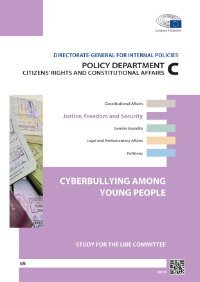By Josine Junger-Tas and J.N. van Kesteren.
The Dutch Organization for Scientific Research (NWO). as well as the ministry of Justice have placed Social Cohesion, as an important subject of research, high on their agenda. In doing so the organization wants to respond to. major concerns in. Dutch society about the growing lack of social and economic integration of various groups. In this respect one might think in the first place of refugees and ethnic minorities, but of course the lack of social cohesion is not restricted to these groups. In fact, it has many faces. It may relate to certain specific population groups, which are relegated to the margins of Dutch society, but. it may also apply to some sub-sectors of the population, which find themselves in particularly unfavorable situations that impede their normal functioning and integration in society. In this respect one might think of the long-term unemployed, the disabled, the mentally disturbed, the alcohol and drug addicted, and the homeless who art roaming around in our big cities.
More in general our society has some difficulties in paying attention to those who are unable to cope with the requirements of our social system, including the criminal justice system. For example, with respect to the latter, it has taken a long time to assign a rightful place to victims of criminal offenses in criminal justice proceedings. Victims hardly had any rights and they were mainly seen and used as witnesses with the purpose of clearing up criminal cases.
One may wonder: is it not a characteristic of western culture to relegate all kinds of victims to the margins of society? Not only because they are frequently weak and cannot defend themselves, but also because they tend to reflect most clearly the shortcomings of our social system. Illustrative in this respect are the victims of domestic violence who simply have been ignored for centuries to be discovered as victims only since about the 1960's. Another example are the victims of school bullying. The problem of bullying has for a long time been considered as not serious and as something children have to sort out among themselves. Victims were considered as sissies who would benefit from being bullied? Even today some teachers claim that being bullied hardens children and teaches them useful lessons about human society. However, from the moment that victims of criminal offenses in general and victims of domestic and school violence in particular were 'discovered', and their situation was recognized as a social and legal problem, the scientific community has investigated the problem. Legal research has looked seriously to their position in the legal system and recommendations were made to improve that position in legal proceedings. In conjunction with this type of studies, criminological research concentrated on the victims as well as on their attackers. Numerous studies have been conducted on physical and sexual child abuse, wife battering and sexual abuse of women. The field of school bullying has been less explored although, since Dan Olweus' breakthrough studies in Norway in the 1970s, the subject: has been placed on the research agenda. One of the triggering elements in this respect was the finding that in a number of countries as diverse as Norway, Japan and England bullying had led to the suicide of several victims. The Meijers Institute has devoted a series of articles to the subject of social cohesion from a legal standpoint; they are published in this series as No. 6. In respect of the special position of the Meijers Institute as the research institute of the Faculty of Law of Leiden University, the institute is also interested in publishing criminological studies on social cohesion. The Meijers Institute considers the subject of school bullying relevant to the larger topic of social cohesion. Consequently we decided publish this study in our series and hope it will find a large and interested audience.
Deventer: Kluger Publications, 1999. 116p.




